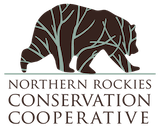Author: Trevor D.S. Bloom1,2, Donal S. O’Leary2,3, and Corinna Riginos1,2
Organization: The Nature Conservancy1, Wyoming, Northern Rockies Conservation Cooperative2, National Ecological Observatory Network3
Title: Flowering Time Advances Since the 1970s in a Montane Sagebrush Steppe Community: Implications for Management and Restoration
Plant phenology is shifting as the climate warms, triggering consequences for species and entire ecological communities. To study the changes in plant phenology for a montane sagebrush steppe community in the Greater Yellowstone Ecosystem (GYE), we assembled historical observations of first flowering dates for 51 species collected in the 1970s and 80s before significant warming occurred, and began standardized phenological observations targeting the same species and locations (2016-2019).
In this paper, we compare four years of contemporary (2016-2019) to historic (1974-79, 88) phenology observations made by Dr. Frank Craighead and model the key climatic drivers of phenology. We observed the largest change in early spring flowers, which bloomed on average 17 days earlier, and as much as 36 days earlier for some species, in the contemporary data set. Mid-summer flowers bloomed on average 10 days earlier, nonnative species on average 15 days earlier, and berries-producing shrubs bloomed 5 days earlier. Late summer flowering plants in particular do not appear to have shifted significantly and flowering is more correlated with Growing Degree Days. The greatest correlates of early spring and mid-summer flowering were average spring temperature (March, April, May) and day of snowmelt. We found that snowmelt was an equally or more important driver of phenology than temperature for many species and that the first snow-free day is 21 days earlier, on average, in 2016-2019 relative to 1973-1978. Our results demonstrate significant shifts in flowering phenology for most plants in the montane sagebrush steppe.
These shifts could trigger asynchronies or novel synchronies of the timing of these plant resources and wildlife species of conservation concern, including Greater sage-grouse, grizzly bears, and pollinators. For example, if berries flower and fruit earlier in the summer and early fall, this could lead to a decrease in food available for bears directly before hibernation. Another example are broad-tailed hummingbirds arriving at the same time each year on their migration, only to find that their favorite flowers are already dried up resulting in reduced nesting success.
 Understanding changes in plant phenology is important for ecosystem management. We encourage land managers to continue conservation efforts that maintain a diverse portfolio of native plants in terms of species composition, genetics, phenological responsiveness to climatic cues, and ecological importance to key wildlife and pollinator species. Redundancy within ecological niches may also be important to allow that those species roles in the community may shift as climate change affects them differently. These considerations are particularly relevant to restoration and habitat-enhancement projects in sagebrush communities across western North America.
Understanding changes in plant phenology is important for ecosystem management. We encourage land managers to continue conservation efforts that maintain a diverse portfolio of native plants in terms of species composition, genetics, phenological responsiveness to climatic cues, and ecological importance to key wildlife and pollinator species. Redundancy within ecological niches may also be important to allow that those species roles in the community may shift as climate change affects them differently. These considerations are particularly relevant to restoration and habitat-enhancement projects in sagebrush communities across western North America.
Photo credits: Trevor Bloom

Trevor Bloom is a Community Ecologist with The Nature Conservancy. He’s collaborating with NRCC Research Associate Corinna Riginos to build on the work of Frank C. Craighead Jr. to better understand how plants and wildlife are responding to climate change in the Greater Yellowstone Ecosystem. The documentary Climb-it Change follows Trevor and his research partners as they climb 76 peaks and uncover the ecological response to increases in wildfire and the shrinking of the alpine zone as temperatures rise.
